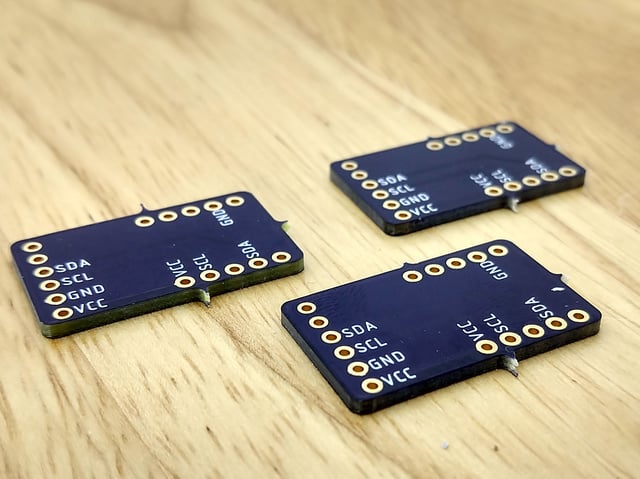Now that we've placed and name our pads, the next step is adding some basic mechanical details on the part.
Adding some basic details on the physical size and shape of your parts lets you see exactly where the boundaries of your part are when you place it on your PCB. This is extremely useful since it allows you to visually avoid placing two parts in an overlapping position, or having your connectors hanging over the edge of a PCB, etc.!
Drawing a Basic Package Outline
You don't need to go into a lot of detail with the dimension details, but as a minimum you should at least add a accurate rectangular package outline that represents the further dimensions of your part.This is what you will use as a visual queue to make sure you don't have parts that overlap each other during assembly.
Looking back at our datasheet again, the basic part outline is easy to draw: it's a simple 2.0 x 1.6mm rectangle:
Step One: Check Your Grid
Before we start drawing the outline, let's do a quick double check to make sure the grid is set to something sensible.Click the grid icon in the upper left-hand corner of Eagle. Since our outline is 2.0 x 1.6 mm, lets make sure the grid is at something like 0.1mm that works with both dimensions. Make sure the 'Display' radio button is set to 'On' as well:
Step Two: Select the Wire Tool
Select the 'Wire' tool in the left hand side of Eagle. It's a simple line, and this is exactly what it's used for ... to draw a line or a series of connected lines on whatever layer you select:With the 'Wire' tool still selected, switch over to Layer 51 (tDocu). The tDocu layer is used for documentation purposes (51 or tDocu for the top of your PCB, 52 or bDocu for the bottom of your PCB), and this is where you normally draw any extra mechanical information that might be useful during assembly.
Step Three: Draw Your Outline
Now that we've selected the 'Wire' tool, and we're working on the right layer, we can start drawing our outline!Move your mouse over to the -1.0 x 0.8 position, which corresponds to the top left corner of our package. This is why it's useful to have the grid setup to something like 0.1mm units!
You can see your exact position by looking at the little box in the top left-hand corner of Eagle:
Click once at -1.0 x 0.8, and then move the mouse over to 1.0 x 0.8, which should results in something like the following image:
- Draw a new line down to 1.0 x -0.8
- Then head over to -1.0 x -0.8
- The head back up to 1.0 x -0.8, being careful to click on out starting point
- Next, press the escape key to stop using the 'Wire' tool!
Essential Eagle Skills
You can adjust the width of the lines drawn with 'Wire' tool (or any other tool) in the dedicate toolbar at the top, as well as the way that lines are drawn (only right angles, right or 45° angles, any angle, etc.).The most important icons are highlighted below, but feel free to explore them all since you'll need to get to know these as you work with Eagle:


























